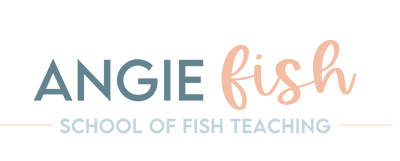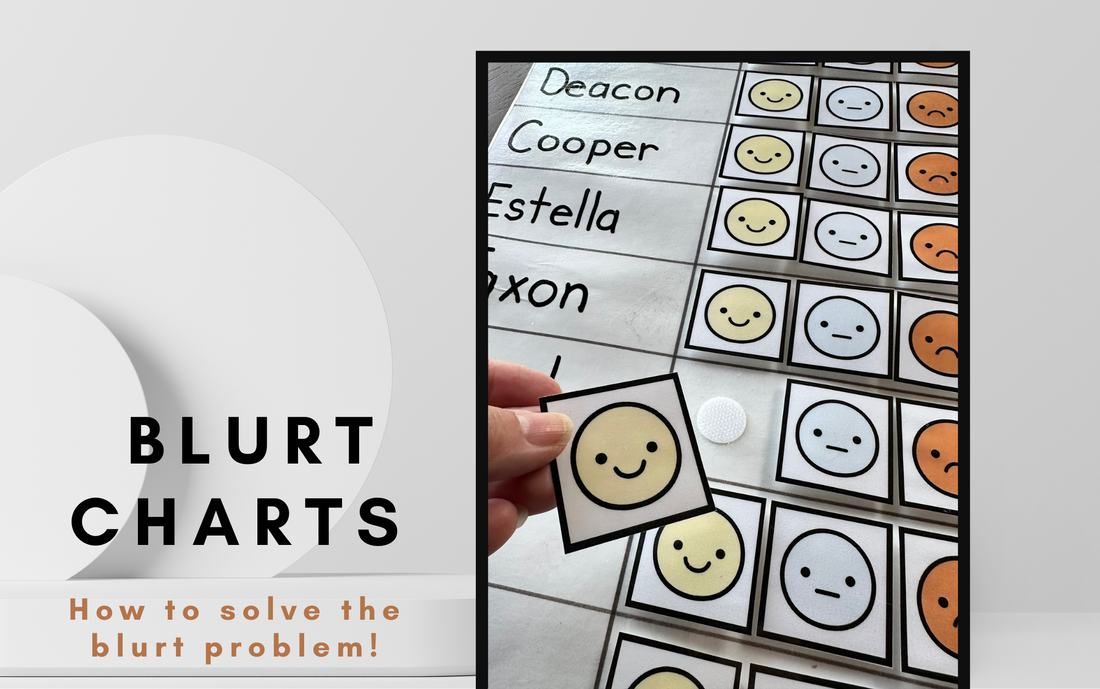Do you have students who just can't seem to stay quiet in class? They continually talk out of turn, interrupting the teacher and disrupting the class. What can you do?

Introducing the Blurt Chart: an effective strategy for gaining control of talkative classes. In this article, we'll discuss what a blurt chart is, the benefits of using one, how to create one, strategies for using one, and why it's effective. We'll also include tips for helping students control their blurting and how to respond to students who are blurting.
What is a Blurt Chart?
A blurt chart is a behavior management strategy that encourages students to remain quiet and on task. It is a visual reminder to help students stay on track, raise their hands, and help teachers maintain control of their classrooms.
The blurt chart is a simple chart that utilizes Blurt Guys (emojis). Included in the set is a personal chart and a class chart. Personal charts can go onto desks or in folders. The class chart option should be displayed in a prominent place in the classroom so that students can easily see it. This serves as a reminder to students of what is expected and what will happen if they don't follow the rules.

This resource comes with numerous color schemes so you can find one that will match your own décor colors!
Benefits of using a blurt chart
The blurt chart is an effective way to manage talkative classes. It provides students with a visual reminder of the expectations for the classroom. It also helps to create an environment of respect and structure in the classroom.
Using a blurt chart can help to build a sense of community in the classroom. The chart gives students a sense of ownership over their behavior and the classroom environment. This encourages them to take responsibility for their actions and to work together to create a positive atmosphere.
How to create a blurt chart
-
Choose which color scheme you want to use. The original green, yellow, and red scheme is very visually obvious, but I personally like to match my more subdued classroom décor. ;)
-
Choose if you want bigger blurt pieces or smaller. If you have a smaller class, it’s nice to use the larger visuals. These print 12 to a page. If you have a larger class, use the smaller emojis. That is the size I used for the sample pictures on the next page. You need the entire class to fit on a standard piece of tagboard.
-
Each student will need 3 pieces: smile, straight, and sad face.
-
You also can print a title. Some people like the ease of the all-in-one poster, but I included separate letters if you want to cut out or print a title to go across the tagboard. My sample has cut out letters. (You may need to select “fit’ on your printer selection for the all-in-one.)
-
Print as much as you need and laminate all the pieces. You can use cardstock to make them sturdier, as kids will be handling them. Or just laminate using thicker laminate.
-
Next, get a piece of tagboard. Divide the tagboard into sections. (See my example photos.) This measuring part is kind of time-consuming, but the board will last years so you only need to do it once. I use a permanent marker for my lines.
-
You’re going to want to laminate the tagboard (if possible) so you can use this for multiple years!
-
The next step is attaching the Velcro. I use Velcro dots from Amazon. You need a dot on the chart and on the back of each emoji. Attach the emojis to each section.
-
Finally, use a vis-à-vis or dry erase marker to write on your student names. This makes it easy to erase at the end of the year so you can prep for a new set of students.
-
That’s it! You’re ready to use the chart.
You should display the chart in a prominent place in the classroom. This will serve as a visual reminder to students of the expectations and consequences.

Strategies for using a blurt chart
Once you have created your blurt chart, you need to put it into action. Here are some strategies for using a blurt chart to manage talkative classes:
• Explain the chart to your students. Make sure they understand the expectations and consequences.
• Refer to the chart often. Remind your students of the expectations and consequences.
• Give positive reinforcement. Praise students when they follow the expectations and remain quiet in class.
• Enforce the consequences. Make sure students understand that the consequences will be enforced if they don't follow the expectations.
• Be consistent. Make sure you are consistent with your expectations and consequences.
• Involve the students. Ask students for their input in creating the chart and enforcing the expectations.
• Make it fun. Use games and activities to reinforce the expectations and keep the class engaged.
How to use my Blurt Chart!
-
I begin by reminding my students about our class agreement. One of our rules is raising our hand for permission to speak. We discuss why this is necessary.
-
We learn the new word “blurt”, which is a great descriptor of what some students do. I like to get student volunteers and I demonstrate blurting while they are talking. We get silly and laugh about this!
-
I then bring out the new chart and show them their names and the emoji pieces.
-
Then I discuss what is going to happen. If a student blurts while I am teaching, they will be told (or signaled) to go remove their first “Blurt Guy”. (The one with the smile.)
-
Every time they blurt, they must remove a piece.
-
Next comes the straight-faced emoji.
-
The last piece is the sad-faced emoji.
-
Once they have lost all 3 Blurt Guys (or whatever you want to call the face emojis) from the chart, they will lose a privilege. In my kindergarten classroom, this is a loss of minutes from our free-choice time. (You need to find something that is valued to the class. My students adore play time and don’t want to lose it.)
-
I personally never take away recess. I believe it is important that all children have active time away from the self-control that is needed in the classroom.
-
I will say that this visual reminder of not blurting has been highly effective in my classroom for years. For some reason, kids really dislike losing those pieces.
Tips for helping students control their blurting
In addition to using a blurt chart, there are other strategies you can use to help students control their blurting. Here are some tips for helping students stay on task and remain quiet in class:
• Model the behavior. Show students how to remain quiet and on task.
• Give clear instructions. Make sure your instructions are clear and concise so that students know what to do.
• Give students time to think. Allow students enough time to think before they answer or respond.
• Use positive language. Speak positively to your students and keep your tone upbeat.
• Use nonverbal cues. Use body language and gestures to remind students to stay quiet and on task.
• Give students choices. Give students choices to help them stay focused and on task.
• Give frequent breaks. Allow students frequent breaks to help them stay focused and energized.
• Use visuals. Use visuals, such as pictures and charts, to help students stay on task.
• Use incentive systems. Create incentive systems, such as rewards and prizes, to motivate students to stay on task.

Class Chart or Personal Charts?
Some teachers prefer not to use the whole group chart and would rather use individual Blurt Charts. This resource gives you both options!
Why blurt charts are effective
Blurt charts are effective because they provide students with a visual reminder of expectations and consequences. The chart gives students a sense of ownership over their behavior and encourages them to take responsibility for their actions.
The chart also helps to create an environment of respect and structure in the classroom. It eliminates power struggles between teachers and students and encourages students to work together to create a positive atmosphere.
Finally, blurt charts are effective because they provide students with a clear understanding of the expectations and consequences for their behavior. This helps to prevent disruptive behavior and encourages students to stay on task.
How to respond to students who are blurting
When a student is blurting out in class, it is important to respond in a calm and consistent manner. Here are some tips for responding to students who are blurting:
• Acknowledge the student. Let the student know that you heard them and that you are aware of the situation.
• Remain calm. Keep your tone of voice calm and even.
• Give a warning. Give the student a warning and remind them of the expectations and consequences.
• Enforce the consequences. Follow through with the consequences if the student continues to blurt out.
• Praise the student. Praise the student when they are following the expectations and remaining quiet.
• Focus on the behavior, not the student. Make sure to focus on the behavior and not the student.
• Focus on the positive. Try to focus on the positive behaviors and reinforce them.
Conclusion
Gaining control of talkative classes can be a challenge, but using a blurt chart is an effective strategy for managing them. The chart provides students with a visual reminder of the expectations and consequences for their behavior, and it helps to create an environment of respect and structure in the classroom.
In addition to using a blurt chart, there are other strategies that can help students control their blurting. These include giving clear instructions, using positive language, and giving students choices. It is also important to respond to students who are blurting in a calm and consistent manner.
If you are looking for an effective way to manage talkative classes, the blurt chart is a great strategy to try. With the right strategies and support, students can learn to control their blurting and stay on task.
Thanks for reading this article about how to gain control of blurting out in the classroom! We hope you found it helpful.

